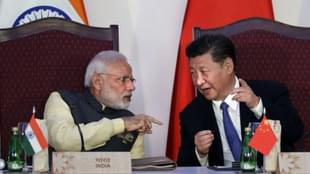Defence
Dokhlam Daily Update: Ajit Doval Lands In Beijing For BRICS NSA Meet
Swarajya Staff
Jul 27, 2017, 09:00 AM | Updated 09:00 AM IST
Save & read from anywhere!
Bookmark stories for easy access on any device or the Swarajya app.


Dokhlam Stand-Off: A Brief History
In mid-June, China started constructing a road on the Dolam plateau in the Dokhlam area near the India-China-Bhutan tri-junction. (Initial reports indicated the name of the standoff site as Dokhlam plateau, which is a separate area around 30km north east of Dolam plateau). India stopped China from proceeding with the road construction, sending in troops to maintain the status quo. Since then, Indian and Chinese soldiers have been locked in a face-off over the issue.
India has said the two governments reached an agreement in 2012 that the status of the tri-junction would be finalised only through joint consultations involving all parties and has accused China of trying to unilaterally change the status quo. The dispute revolves around the question of where the final tri-junction point – the point at which the boundaries of India, China and Bhutan meet – lies.
China has responded with repeated threats and has refused to negotiate unless India withdraws troops from the region. India, in turn, has rejected the demand for unilateral withdraw and has proposed mutual withdrawal followed by diplomatic negotiations.
Here, we will keep track of all developments that will shape this crisis:
27 July
National Security Adviser Ajit Doval reached Beijing on Wednesday to attend a two-day BRICS security summit starting Thursday along with representatives from Brazil, Russia and South Africa. Doval’s is expected to meet Chinese State Councillor Yang Jiechi in and pay a courtesy call on Chinese President Xi Jinping on Friday.
On the issue of a bilateral engagement between India and China on the sidelines of the meeting, China said it can’t be ruled out.
"On bilateral meetings, I do not have the relevant information right now. As far as we know, in previous meetings, usually it is arranged for the heads of delegations to hold meetings to exchange views on bilateral relations and other international issues,” Chinese Foreign Ministry spokesperson Lu Kang has said. However, he stressed that a "meaningful dialogue" was not possible until India withdrew.
26 July
China's Foreign Minister Wang Yi claimed on Wednesday that India "admitted" to entering Chinese territory and said the solution to the standoff was for its troops to "conscientiously withdraw" from the Dokhlam area in the Sikkim sector.
"The rights and wrongs are very clear, and even senior Indian officials have openly stated that Chinese troops did not enter into the Indian territory," Wang said, commenting for the first time over the stand-off.
25 July
On Monday, China repeated its demand for Indian withdrawal, warning New Delhi not "to push your luck" amid a festering border dispute.
"Here is a wish to remind India, do not push your luck and cling to any fantasies," Chinese Defence Ministry spokesman Colonel Wu Qian said.
Sounding a warning for India, he said, “Chinese border troops have taken initial counter measures at the site and will step up targeted deployment”.
Meanwhile, South China Morning Post has reported that India is also preparing for a long haul in the stand off with China.
“New bunkers are being built, the ground is being mined to pre-empt Chinese attack, machine-gun nests are being placed at strategic points, and soldiers are performing battle drills at least twice a day,” the daily’s report read.
Follow this space for more updates.




